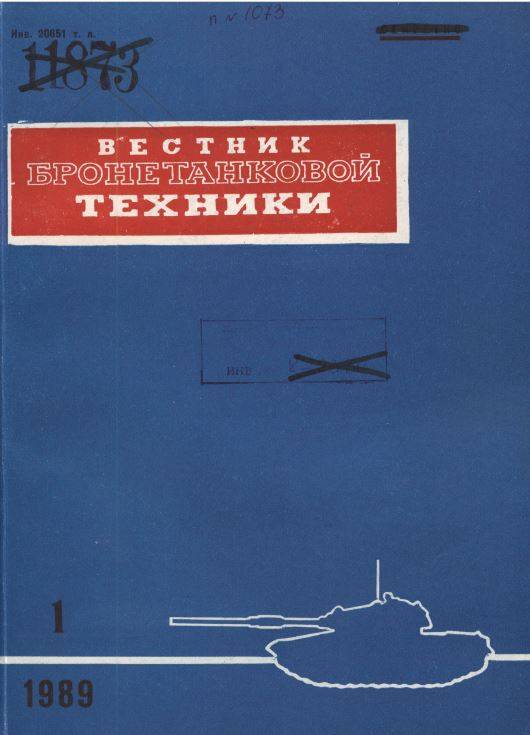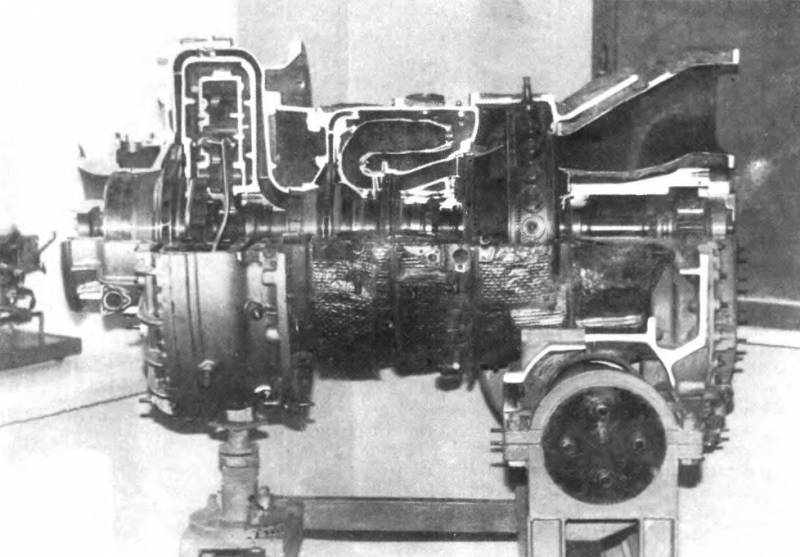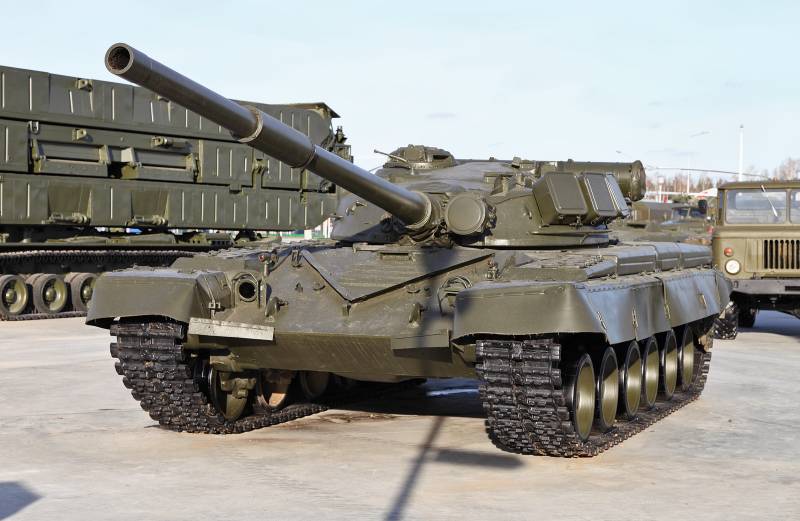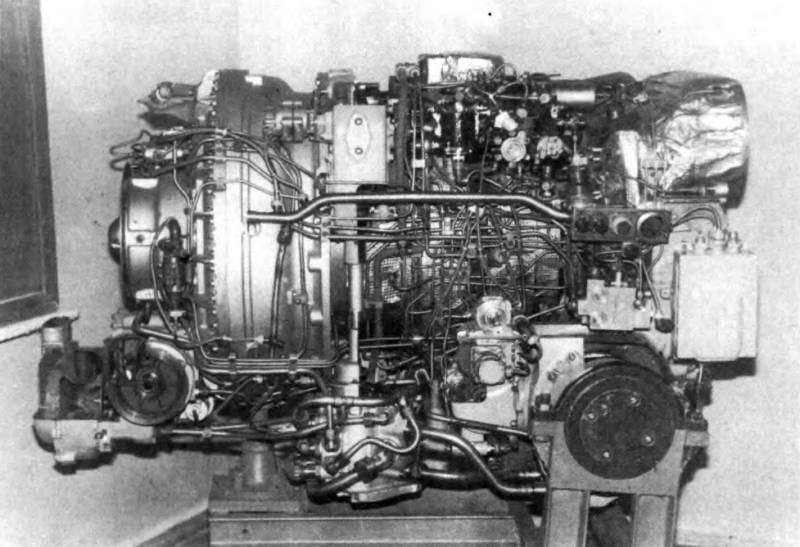Tank gas turbine: discussion on the pages of the "Bulletin of armored vehicles"
First developments
In continuation material cycle about stories domestic tank engine building, it is worth dwelling on the development of the gas turbine theme. As it turned out, there was no consensus among Soviet engineers regarding the advisability of a gas turbine engine in tank... At the end of the 80s, the specialized and secret edition of the Bulletin of Armored Vehicles became a field for real discussion.

Cover of the Bulletin of Armored Vehicles.
It is noteworthy that in the publication of the Soviet tank industry, back in 1947, a material was published "On the possibility of using a gas turbine as a tank engine." It was the diploma project of the senior technician Lieutenant Georgy Yuryevich Stepanov, who, under the guidance of a professor at the Moscow Higher Technical School. N.E.Bauman V.V. Uvarov was engaged in calculations of a gas turbine for a tank with a capacity of 1500 liters. from.
At the time of publication, Georgy Yuryevich graduated from the engineering faculty of the Military Academy of Armored and Mechanized Forces. Subsequently, G. Yu. Stepanov became a prominent domestic engineer, doctor of physical and mathematical sciences, until 1982 he headed the department of engines of the armored academy.
At the end of the 40s, the concept of equipping heavy breakthrough tanks with gas turbine power plants was born in Soviet tank building. Medium tanks, more adapted to mobile warfare, were left with the classic diesel engines.
It seemed that the gas turbine plant, due to its compactness, relative simplicity and unpretentiousness, was ideal for heavy machines. The tactics of using heavy tanks involved working close to the rear supply and small runs. And the volumes of the reserve space saved due to the compact turbine were supposed to be used to strengthen the reservation and weapons.
How not to recall the words of the legendary designer A.A.Morozov:
We can say that this has become the motto of domestic tank builders for many decades to come.
Even before practical tests of prototypes, the engineers had a clear picture of all the pros and cons of a tank GTE. In addition to the positive aspects described above, the turbine did not require a cooling system, it was easy to start in any frost, was relatively quiet and did not have a smoky exhaust. Calculations showed that the gas turbine in the tank saved up to 3 tons of mass without taking into account the placement of additional fuel. Also, among the positive aspects, the engineers highlighted the reduction in the area of the inlet and outlet openings in the tank hull - the engine did not need air for cooling. This bonus made the tank's MTO more resistant to the impact of the shock wave of a nuclear explosion.
But there were also enough minuses - low efficiency, high fuel consumption and low resource. The fragility of the gas turbine engine was explained by its extreme sensitivity to dustiness in the air. All other things being equal, a gas turbine engine consumed 4–8 times more air than a diesel engine, and required non-trivial solutions for cleaning it from dust.
By way of discussion
The history of the world's first gas turbine tank T-80, as we can see, began long before it was put into service on July 6, 1976, when the corresponding decree of the USSR Council of Ministers was issued.
We will leave the assessment of the tank engine and its evolution for the subsequent articles of the series and concentrate now on the discussion that unfolded on the pages of the Bulletin of Armored Vehicles.
Twelve years after the T-80 was put into service, the journal publishes the material of the researcher VA Kolesov "Some questions of the fuel efficiency of tanks", in which the author does not leave the concept of a gas turbine tank stone unturned. The article for Vestnik turned out to be so controversial that it was awarded the note “in the order of discussion”.
The author proposes to introduce into the requirements for tanks the concept of travel fuel consumption or, to simplify, fuel consumption per one kilometer of run. Up to this point, the power reserve was used as the main parameter for evaluating the tank's economy. The developers of the technology could not particularly care about fuel consumption, increasing, if necessary, the supply of transported diesel fuel. Kolesov rightly notes that in combat conditions, full refueling, which guarantees the indicated range of the tank, matters only in the first phase of the operation.
During offensive operations, it is far from always possible to promptly deliver fuel in the required volume to tank units. Tankers will have to interrupt what they managed to get, and here the power reserve will be of no interest to anyone. Fuel efficiency of the car will come to the fore. And here the gas turbine T-80 loses with a devastating score.
In the article, Kolesov compares the travel fuel consumption of a T-80 gas turbine tank with a T-72 diesel tank. Imagine a hypothetical situation when two tanks, T-80 and T-72, stood up in the offensive with empty tanks. The tanker delivered 500 liters of fuel to the vehicles. A gas turbine power plant of this volume will be enough for only 64 kilometers, while the T-72 diesel engine will provide 132 kilometers.
A fair question arises: maybe it would be more logical to send the Nizhny Tagil T-80 into battle instead of the T-72? A diesel car with an equal volume of fuel will provide more than twice the mileage with the same level of protection and firepower. On average, a tank GTE consumed about 7,8 liters of fuel per kilometer, and a diesel one - 3,8 liters.
An unconditional plus of the gas turbine engine in its compactness - the T-80 MTO takes 2,5 cubic meters, and the T-72 already has 3,1 cubic meters. At the same time, the diesel V-46 develops 780 liters. from. against 1000 liters. from. the gas turbine analogue. The T-80 is content with a full-tank cruising range of 318 km, and the T-72 - 388 km. The gluttonous GTE forces them to carry 645 liters of fuel more than is provided in a diesel tank.
The author, in addition to a critical attitude to the gas turbine engine, proposes to include in the tactical and technical requirements for the tank track fuel consumption at speeds of 10, 25 and 40 km / h. But the volume of the engine compartment, which the developers of the T-80 are so proud of, should not be taken into account at all without the parameters of efficiency. Why miniaturize the engine if the tank has to carry additional fuel?
In 1989 (eleven months after Kolesov's publication in Vestnik), Elena Vladimirovna Kalinina-Ivanova's material was published, devoted to the analysis of the fuel efficiency of a gas turbine engine.
A little about the author. Elena Vladimirovna - Doctor of Technical Sciences, leading specialist of VNIITransmash in the field of fuel efficiency of armored vehicles and a developer of highly efficient cyclones-air cleaners for tanks.
Kalinina-Ivanova titled her material very simply: “About VA Kolesov's article“ Some questions of fuel efficiency of tanks ”, where she arguably supported the author.
Elena Vladimirovna quite reasonably notes that the range of a tank is a very flexible concept. Depending on traffic conditions, it can be reduced by more than half! It is proposed to supplement the parameter of the track fuel consumption from Kolesov's article with three more: the consumption of a single tank along a concrete highway, along a dry primer and a column of tanks along a column path. In all three cases, the tanks must move as fast as possible.
Kalinina-Ivanova also supplements her reflections with a proposal to investigate the fuel consumption of the engine in the entire range of speed and load. At the end of the material, the doctor of technical sciences transparently hints that if these parameters were entered into the TTT for the T-80, then the gas turbine tank would not have been adopted at all in its original configuration.
Opponents' response
In the same issue of "Vestnik" No. 10 for 1988, another review of Kolesov's "debatable" article was published.
Authors VA Paramonov and NS Popov were directly related to the development of the engine for the T-80 and could not help but respond to criticism. The material "Concerning the discussion about the fuel efficiency of the tank" is clearly the result of a very serious analysis and is filled with a mass of facts that refute Kolesov's opinion. The author was reminded of the history lessons in connection with the Maxim machine gun, when the Russian military department refused weapons, due to the "unnecessary and dangerous waste of a large number of cartridges and the difficulties of combat power."
Paramonov and Popov in the article refer to the famous comparative tests of the T-80B, T-72A and T-64 machines in 1983-1986. A tank with a gas turbine engine started up faster in the cold and was the first to march. While the tankers revived the T-72A in a thirty-degree frost, the T-80B went under its own power up to 20 km. The authors also pointed out the low average speed of the Nizhniy Tagil tank. The car lagged behind the T-80B in speed by 10% - on hard roads and 45% - on snow-covered virgin soil. Heavier than a diesel car, climbs were given on soft soils and snow-covered slopes.
And, finally, the crown - the T-72A consumed 40 times more engine oil than the T-80B GTE under similar conditions. The authors generally suggest not paying attention to such small bonuses as the best ergonomic performance of the gas turbine engine, the reduction of vibrations harmful for aiming and firing, and excellent maintainability.
Further, Paramonov and Popov convict Kolesov of bias regarding the travel fuel consumption as a parameter of the tactical and technical requirements for the tank. For example, a tank with a weak engine, and even taking up a lot of space, may become more economical during testing. Thus, the T-72 in comparative tests with the outdated T-62 demonstrates a 13% higher travel fuel consumption. At the same time, the mobility of the T-72 is much higher than that of its predecessor. According to the logic of Kolosov, the T-72 was put into service in vain, the authors suggest? In the article, in general, the GTE rises to the pedestal of the world engine building.
At the end of the 80s, all the leading tank-building powers were conducting research on the development of gas turbine engines. And promising tanks will not be able to do without a gas turbine engine at all, since the required specific power of 30 hp / t with piston engines cannot be achieved.
In the end, the authors completely fantasized the imminent advent of gas turbine engines in civilian technology.
Time, as we can see, put everything in its place and showed who was really right.
To be continued ...



Information